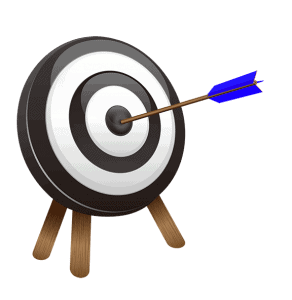The common saying is “people don’t want a quarter inch drill, they want a quarter inch hole.” But did anyone ever think to ask WHY people want a hole in the first place? The answer to this question reveals customer motivation.
What motivates your customer?

What do customers value most?
The success of every company depends on its ability to create products and services that address customer needs in a way that recognizes customer motivation. If you focus on helping the customer address their reason for taking action, you will become a market leader.
There are five types of customers for innovative products: innovators, early adopters, the early majority, the late majority, and laggards. Each type of customer is motivated by something different:
- Innovators want to be agents of change
- Early adopters want a competitive advantage
- The early majority wants to solve a specific problem
- The late majority wants to avoid falling too far behind
- Laggards want to avoid anything new and only buy when they have to
Which adopter segment are you selling to right now? And are you in alignment with that segment?
This is the primary reason users don’t automatically or simultaneously accept even the best ideas and most useful products. Innovations that don’t acknowledge and address customer motivation are rarely successful.
The psychology of market development
Buying behavior is far more about gut-level motivation than about reason, especially when innovations are involved. The adventurous mindset of early adopters is almost 180 degrees opposed to that of people in the mainstream. One is attracted to the risks and potential rewards represented by the unproven innovation, while the other is repelled by those same risks.
While the Early Adopters favor things that are “new,” the mainstream favors things that are “accepted.” So a significant shift needs to take place to address the much different motivations of each group. Your focus must be on addressing each adopter category uniquely, based on their specific characteristics while anticipating the needs and motivations for the next adopter category.

Capturing customer beliefs is not easy
Customers do not naturally share their inner thoughts and beliefs about products and vendors. Consequently, customers must be engaged in a conversation that is designed to reveal their personal perspective. The process begins by developing an interview guide that encourages customers to speak openly about their thought process. This approach has been used by the most innovative companies around the world for over 50 years.
Trained interviewers can reveal the motivations and beliefs of customers in nearly any customer setting including personal interviews and group interviews. In a typical one-hour interview, it is possible to capture the psychographic and motivational characteristics of a customer. The captured information represents the specific value proposition that define the acceptance of a new product or innovation.
Focusing on the wrong value leads to failure
It’s hard to believe but the majority of customers don’t want the latest and greatest features. For example, mainstream customers primarily want low risk, evolutionary progress and familiarity.
Manufacturers of digital cameras like Cannon, Fuji and Casio thought buyers would want advanced features like better resolution and more storage. But Sony took advantage of the industry’s lack of standards (which are very important to mainstream buyers) and designed the Mavica to work with a standard storage device, the floppy disk. They also made the Mavica extremely easy to use. The result? Despite higher price and less functionality, the Sony Mavica was the market leader in its category with 41% market share.
The first step in profiting from the customer is knowing which adopter type you are serving. We find the location of your category within the Technology Adoption Lifecycle, to make the right choices, and so the value you deliver is aligned with the needs and motivations of the end user. This is part of our market strategy development process, The Customer Alignment Lifecycle (CAL). Learn more about our growth strategy consulting services.

Understanding customer motivation drives company growth
Having a complete understanding of customer motivation, as defined by the customer alignment lifecycle, impacts all aspects of new product success. Customer motivation defines the way opportunities are evaluated, the way markets are segmented, the way product and pricing strategies are formulated, the way product value is measured, and the way products are positioned. Psychographic profiles guide and drive the entire innovation process.
Learn more about the evolution of customer motivation and why growth hacking is a myth.
